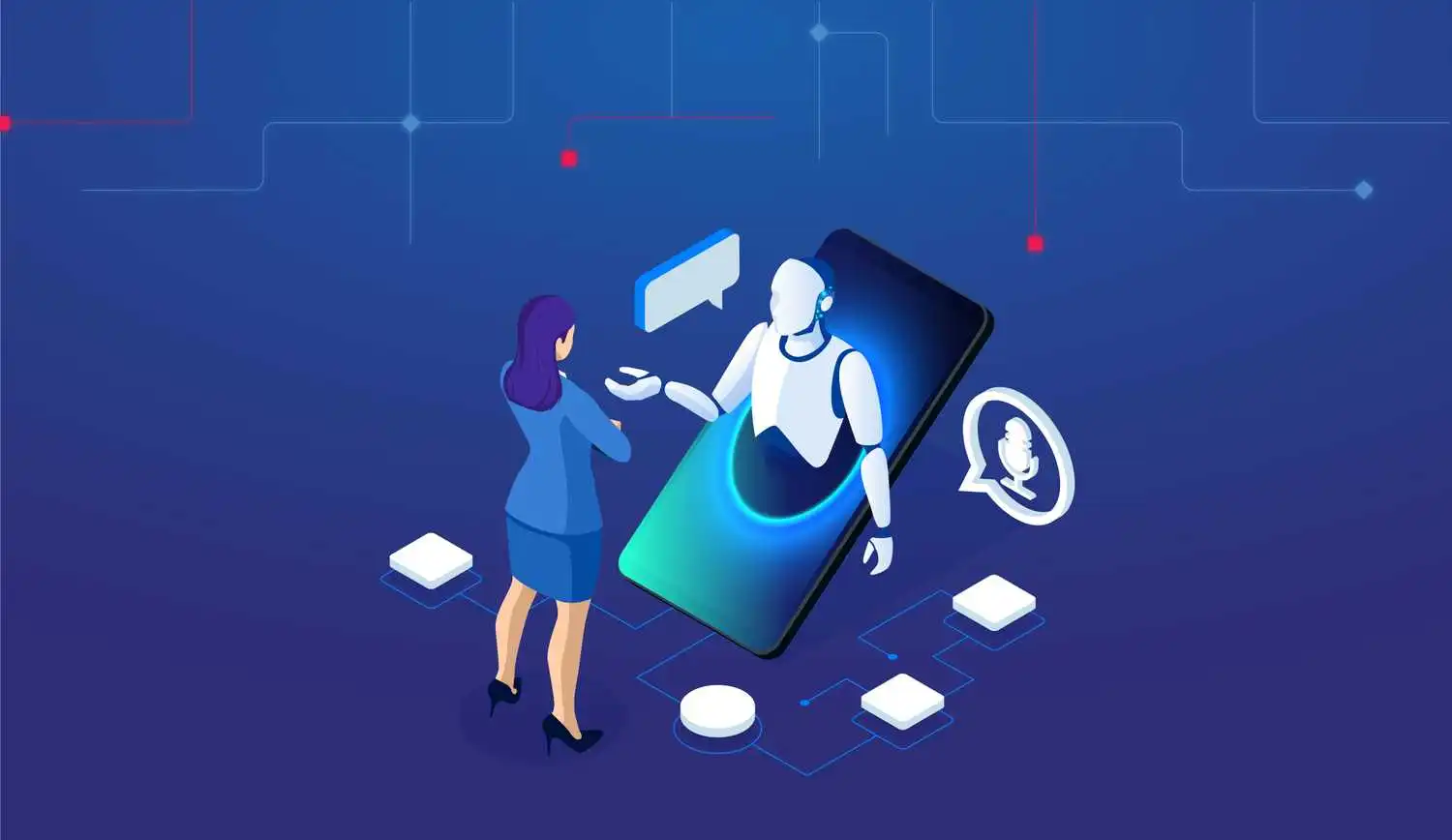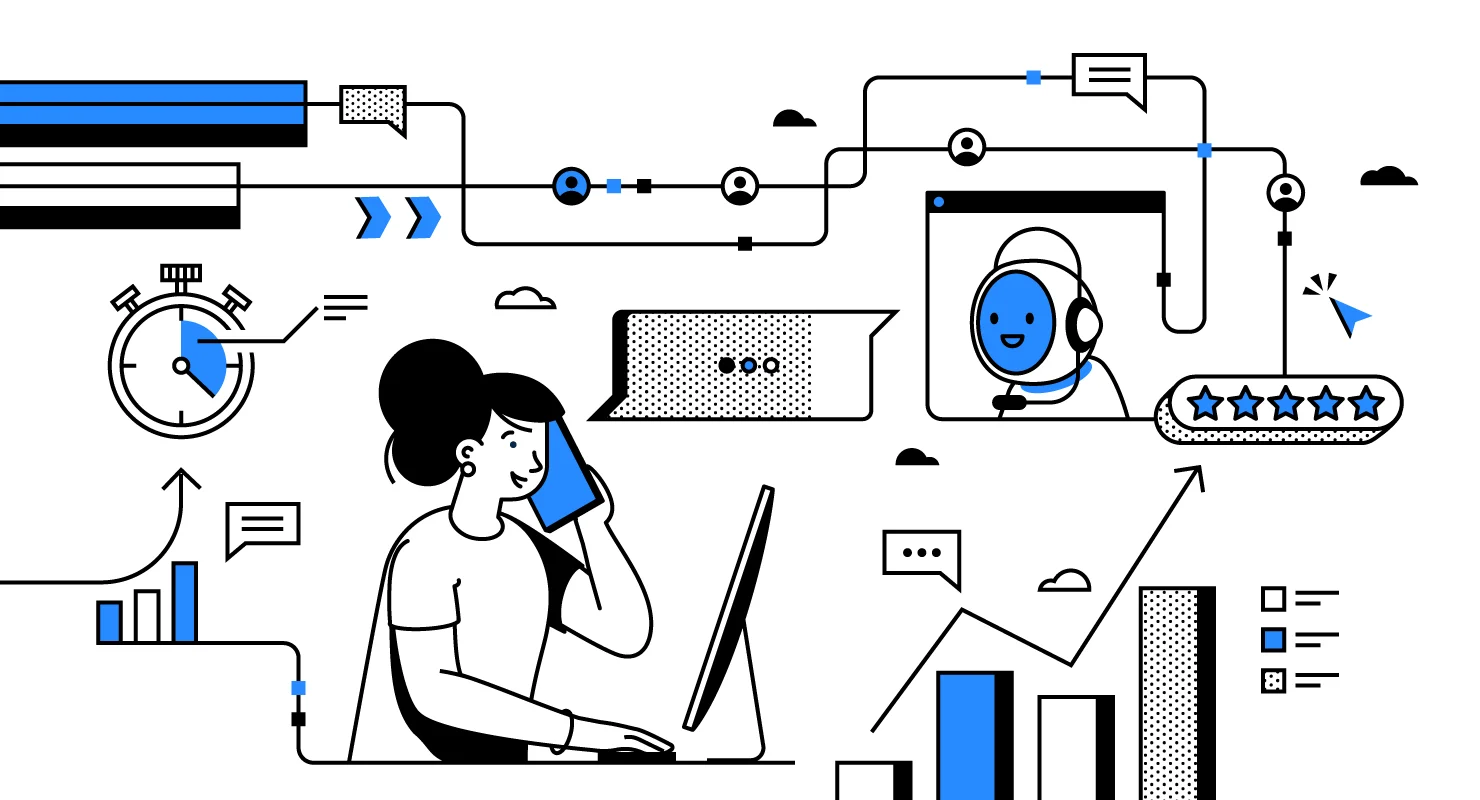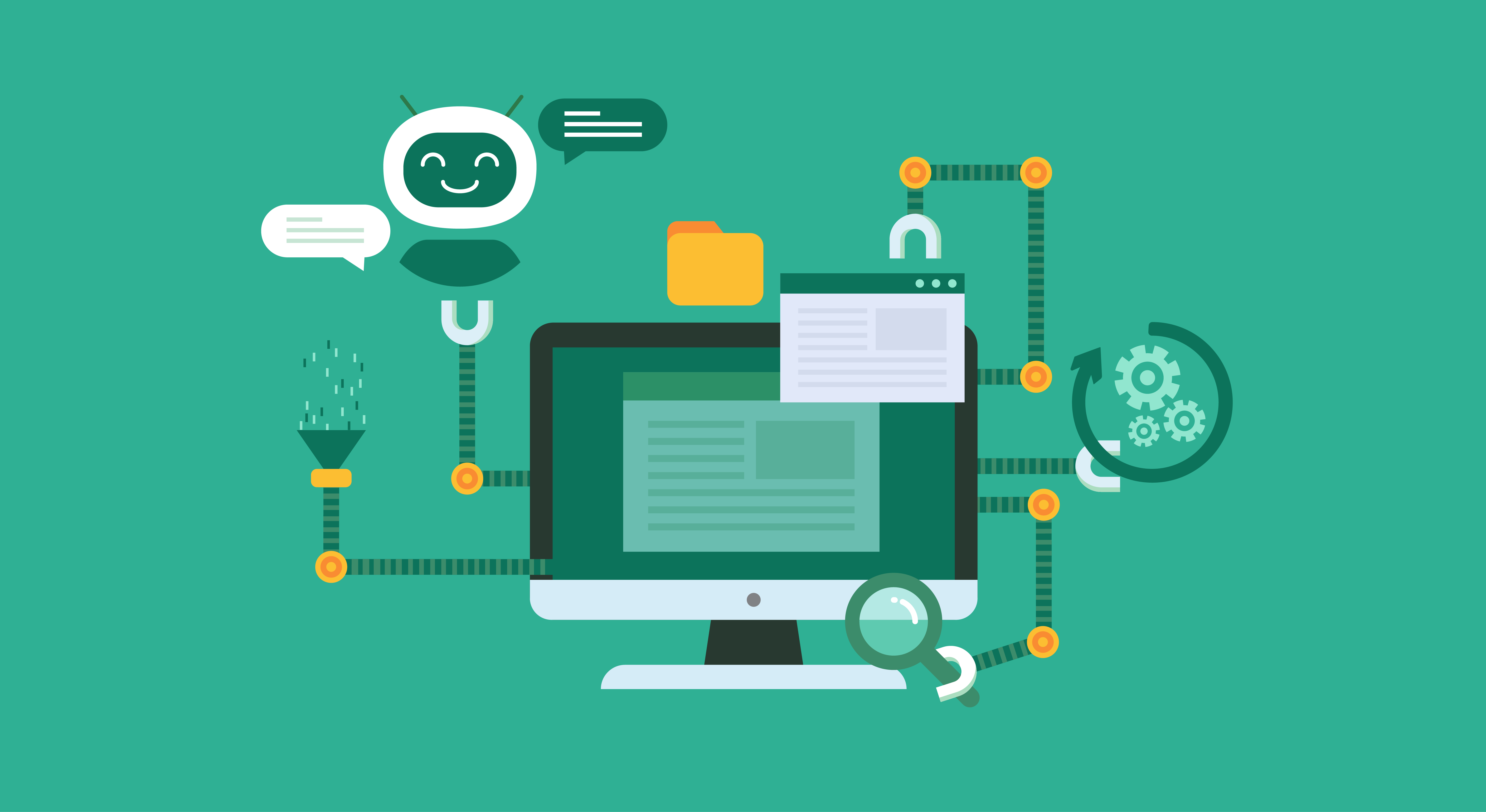Imagine seamlessly switching between email, social media, or live chat without ever losing context. That’s the power of Omnichannel Customer Support.

Unlike traditional, siloed approaches, Omnichannel Customer Service creates a unified experience, boosting customer satisfaction and loyalty. This goes beyond convenience. Businesses gain valuable insights to personalize marketing and proactively solve issues, driving revenue and efficiency. Omnichannel support isn’t just an upgrade; it’s a strategic key to unlocking business success. Stay tuned as we delve deeper into building a winning Omnichannel Customer Service Platform strategy!
Understanding Omnichannel Customer Service vs. Multichannel Customer Service
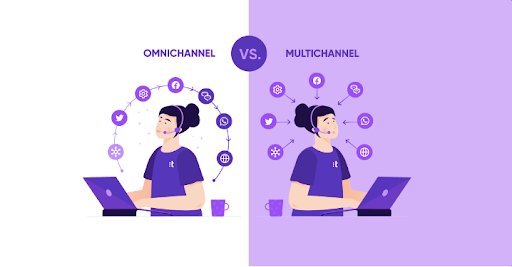
Omnichannel Customer Support: Integrated and Consistent Experience Across All Channels
Omnichannel support is designed to provide customers with a seamless and unified experience, no matter which channel they choose to use. In an Omnichannel for Customer Service approach, all communication channels—such as email, social media, live chat, phone, and in-store interactions—are integrated. This means that customer data and interactions are synchronized across all platforms, allowing for a cohesive and continuous experience. For instance, a customer could start a conversation with a brand on social media, continue it via email, and complete it over the phone without having to repeat any information or context. This integration ensures that each touchpoint with the customer feels like part of a single, fluid conversation.
Multichannel Customer Support: Separate, Siloed Channels Without Integration
In contrast, a Multichannel Customer Service Strategy allows customers to interact with a brand through various channels, but each channel operates independently. This means that customer interactions and data are not shared between channels. If a customer reaches out via email and then follows up with a phone call, they might have to explain their issue from scratch because the support agent on the phone does not have access to the email interaction. While multichannel strategies do offer multiple avenues for customer interaction, they lack the coherence and fluidity of Omnichannel Customer Support Software, often leading to fragmented and less satisfying customer experiences.
Customer Journey Focus in Omnichannel Customer Care
Omnichannel: Supports a Continuous, Personalized Journey:
The omnichannel approach places a strong emphasis on creating a continuous and personalized journey for the customer. By integrating all channels and ensuring that customer data is centralized, businesses can provide tailored interactions based on previous engagements and preferences. This approach not only enhances the customer experience by making it more intuitive and less repetitive but also builds a deeper connection between the customer and the brand. For example, if a customer expresses a preference for a particular product in an online chat, that information can be used to personalize email promotions or in-store recommendations, creating a more engaging and relevant experience.
Multichannel: Deals with Isolated Interactions:
On the other hand, multichannel support treats each customer interaction as an isolated event. Because there is no integration between channels, each interaction is independent, and there is no continuity in the customer journey. This can lead to frustration, as customers may have to repeat information and experience inconsistencies in service. The lack of a holistic view of the customer’s interactions means that opportunities for personalization and proactive service are often missed, resulting in a more transactional and less connected relationship with the customer.
Key Components of a Seamless Omnichannel Customer Support Experience
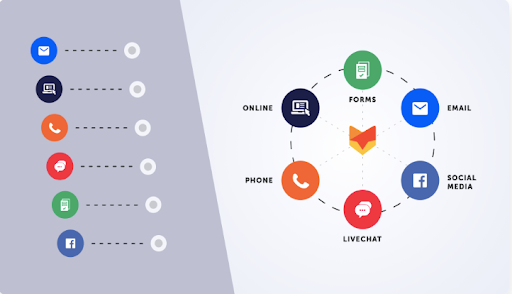
Creating a seamless Omnichannel Customer Support experience involves integrating various customer touchpoints into a cohesive and unified system. This requires both strategic planning and the right technological tools to ensure that customers enjoy a consistent and personalized journey, regardless of how they choose to interact with the brand. Below are the essential components that businesses must focus on to achieve a truly seamless Omnichannel Customer Service experience.
1. Integration of Channels in Omnichannel Communication for Customer Service
Centralizing Customer Data through CRM Systems:
A fundamental component of a seamless Omnichannel Customer Care experience is the centralization of customer data. This is typically achieved through Customer Relationship Management (CRM) systems that consolidate all customer interactions and data into one unified platform. By centralizing data, businesses can ensure that customer information is easily accessible and consistent across all channels. This allows support agents to view a complete history of customer interactions, regardless of the channel used, enabling more personalized and efficient service. Centralized data helps in creating a 360-degree view of the customer, which is crucial for delivering a Seamless Omnichannel Customer Experience.
Ensuring Consistent Branding and Messaging Across Channels:
Consistency in branding and messaging is another key element of an Omnichannel Customer Service Platform strategy. Whether a customer is interacting with a brand via email, social media, live chat, or in-store, the experience should feel uniform and coherent. This means maintaining the same tone, style, and quality of communication across all touchpoints. Consistent branding helps in building trust and recognition, making customers feel confident that they are dealing with the same brand no matter which channel they use. It also reinforces the brand’s identity and values, contributing to a stronger overall customer relationship.
2. Technology and Tools for Omnichannel Customer Support Solutions
Use of AI Chatbots for Immediate Responses and Personalization:
Omnichannel Communication for Customer Service is enhanced by the use of AI chatbots, which provide immediate responses and personalized interactions. These chatbots can handle a wide range of customer queries in real-time, offering instant support and freeing up human agents to tackle more complex issues. AI chatbots can also analyze customer data to deliver personalized recommendations and solutions, further enriching the customer experience. By integrating chatbots into the Omnichannel Customer Support Software strategy, businesses can ensure that customers receive prompt and relevant assistance at any time of the day.
Automation Tools for Managing Customer Interactions and Data Analysis:
Automation tools are essential for managing the myriad interactions and data points that come with an Omni-Channel Customer Service Strategy. These tools can automate repetitive tasks, such as sending follow-up emails, updating customer records, and routing inquiries to the appropriate department. Automation also enables businesses to analyze vast amounts of customer data efficiently, uncovering insights into customer behavior, preferences, and trends. This data-driven approach allows businesses to continuously refine their Omnichannel Customer Service Solutions, making informed decisions that enhance the customer experience. Automation ensures that the Omnichannel Customer Support System runs smoothly and effectively, providing consistent and high-quality service across all channels.
Steps to Implement an Omnichannel Customer Support Strategy

Implementing an Omnichannel Customer Support strategy involves a series of well-planned steps to ensure that customer interactions are seamless, integrated, and personalized. Below are the essential steps to successfully deploy an Omnichannel for Customer Service approach:
1. Conducting Research for Omnichannel Customer Support
Developing Detailed Buyer Personas:
The first step in implementing an Omnichannel Customer Service strategy is to develop detailed buyer personas. These personas represent the various segments of your customer base and are created based on demographic data, purchasing behaviors, preferences, and pain points. By understanding who your customers are, you can tailor your Omnichannel Customer Care strategy to meet their specific needs and preferences. This involves gathering data from various sources, such as surveys, customer feedback, and analytics, to create a comprehensive picture of your target audience.
Understanding Customer Preferences and Behaviors:
Beyond developing personas, it’s crucial to delve into the specific preferences and behaviors of your customers. This involves analyzing data from multiple touchpoints to understand how customers interact with your brand across different channels. Identify patterns and trends in customer behavior to determine which channels are most popular and effective. This understanding helps in designing a strategy that aligns with customer expectations, ensuring that the channels they prefer are prioritized and optimized for seamless interaction. This will lead to a Seamless Omnichannel Customer Experience.
2. Data Centralization for Omnichannel Customer Service Platforms
Implementing a Unified Data Strategy:
A unified data strategy is essential for a successful Omnichannel Customer Support approach. This strategy involves consolidating all customer data from various touchpoints into a single, centralized system. By having a unified data repository, businesses can ensure that every interaction a customer has with the brand is informed by previous interactions, regardless of the channel used. This creates a cohesive and informed customer experience, enhancing your Omnichannel Customer Service Automation Platform.
Integrating Data from All Touchpoints into a Central System:
To achieve data centralization, businesses must integrate data from all customer touchpoints—such as website interactions, social media engagements, email communications, and in-store visits—into a central Omnichannel Customer Support System. This integration allows for real-time access to customer information, enabling support agents to provide personalized and informed assistance. A centralized system ensures that customer data is up-to-date and accessible across all departments, fostering a more connected and efficient service environment. This is essential for Omnichannel Customer Support Solutions.
3. Consistent Customer Experience with Omnichannel Customer Care
Maintaining Consistent Communication and Branding:
Consistency in communication and branding is critical for an effective Omni-Channel Customer Service Strategy. Customers should experience the same tone, style, and quality of service across all channels. This involves creating guidelines and standards for communication that are adhered to by all team members. Consistent branding reinforces the brand’s identity and ensures that customers have a cohesive experience, which builds trust and loyalty. Utilizing Omnichannel Customer Service Tools can enhance this consistency.
Enabling Seamless Transitions Between Online and Offline Channels:
A Seamless Live Chat Customer Support System allows customers to transition effortlessly between online and offline channels. This means that customers can start an interaction online, such as browsing a website or engaging in a live chat, and then continue the interaction offline, such as visiting a physical store, without any disruption or loss of context. To enable this, businesses must ensure that customer data is accessible across all channels and that employees are equipped to handle transitions smoothly. This might involve training staff and implementing technology that supports integrated channel experiences, emphasizing the Benefits of Omnichannel Customer Service.
4. Enhancing Customer Interaction in Omnichannel Customer Support
Enhancing customer interaction is crucial for delivering a memorable and effective Omnichannel Customer Support experience. By focusing on personalization and self-service options, businesses can meet customer expectations more effectively and improve overall satisfaction. Here’s how to enhance your Omnichannel Customer Care approach:
1. Personalization in Omnichannel Customer Service
Leveraging Customer Data for Tailored Experiences:
Personalization is at the heart of an enhanced Omnichannel Customer Service interaction strategy. By leveraging customer data, businesses can create tailored experiences that resonate with individual customers. This involves collecting and analyzing data from various touchpoints to understand customer preferences, behaviors, and needs. For instance, if a customer frequently purchases certain types of products, personalized recommendations can be made based on their past purchases. Personalization extends to communication as well, where emails, messages, and offers can be customized to match the customer’s interests and buying patterns. This level of personalization makes customers feel valued and understood, increasing their loyalty and engagement with the brand through an Omnichannel Customer Service Platform.
Providing Context-Specific Support Based on Customer History:
Another critical aspect of personalization is providing context-specific support. By having access to a customer’s history with the brand, support agents can offer more relevant and effective assistance. For example, if a customer contacts support about an issue, the agent can quickly review their previous interactions and purchases to provide a solution that takes their entire history into account. This not only speeds up the resolution process but also enhances the customer’s experience by avoiding repetitive questions, ensuring that the support provided is directly applicable to their situation. This approach is fundamental to the Seamless Omnichannel Customer Experience.
2. Self-Service Options in Omnichannel Customer Support Software
Implementing FAQs and Chatbots to Handle Basic Queries:
Self-service options such as FAQs and chatbots are essential for modern Omnichannel Customer Support Solutions. Implementing a comprehensive FAQ section on your website can help customers find answers to common questions quickly without needing to contact support. This not only saves time for the customer but also reduces the workload on support agents, allowing them to focus on more complex issues. Similarly, chatbots can handle basic queries and provide instant responses around the clock. These Omnichannel Customer Support Software tools can guide customers through troubleshooting steps, provide information on products and services, and even assist with simple transactions, significantly improving efficiency and customer satisfaction.
Reducing Wait Times and Enhancing Customer Convenience:
Self-service options are highly effective in reducing wait times and enhancing customer convenience. By enabling customers to resolve their issues independently, businesses can ensure that support is available at all times, without the delays associated with waiting for a human agent. This immediate access to information and assistance can greatly improve the customer experience, making interactions smoother and more efficient. Furthermore, self-service tools can be integrated with live support options, where more complex issues can be escalated to human agents seamlessly if needed, ensuring that customers receive the appropriate level of support promptly through an Omnichannel Customer Service System.
Conclusion
Delivering a Seamless Live Chat Customer Support System experience isn’t just a competitive advantage; it’s a necessity. By integrating channels, empowering agents with unified data, and prioritizing customer convenience, businesses can foster stronger relationships and drive loyalty. As technology evolves and customer expectations shift, staying ahead requires continuous adaptation and optimization. By embracing a holistic approach to Omnichannel Customer Support, organizations not only enhance operational efficiency but also elevate the overall customer experience, ensuring they remain at the forefront of customer-centric innovation and reap the Benefits of Omnichannel Customer Service.
About Wizr AI
Wizr enhances customer support seamlessly with AI-powered customer service tools. Cx Hub predicts and prevents escalations, while Agent Assist boosts productivity with automated customer service software. Auto Solve handles up to 45% of tickets, freeing agents for complex issues. Cx Control Room analyzes sentiment to guide proactive solutions, maximizing satisfaction and retention. Guided by generative AI for customer support, Wizr prioritizes exceptional customer experiences. To explore how these tools can benefit your business, request a demo of Wizr AI today.
AI-Powered Chatbots vs. Virtual Assistants: Which AI Is Best for
Organizations today are using AI to not just enhance customer engagement but to elevate the quality of service being offered….
The Role of Natural Language Processing (NLP) in Generative AI
There has been significant progress in artificial intelligence over the past decade. Two important technologies that have emerged during this…
Top 9 AI Call Center Software for US SaaS Businesses
Efficient and reliable customer service is a key differentiator in today’s fast-paced SaaS industry. Traditional call centers struggle to meet…
10 Benefits of Automated Ticket Routing for Contact Center
Automated ticket routing is transforming how call centers manage and resolve customer inquiries. By leveraging AI-Driven Ticketing Systems for Contact…
How Voice Call Sentiment Analysis Drives Contact Center Success
Voice call sentiment analysis is transforming how contact centers operate by providing deeper insights into the emotions and interactions of…
Top 15 Customer Service Automation Software in 2024
Businesses are always seeking ways to deliver better customer support at reduced costs. One effective method is through best customer…
